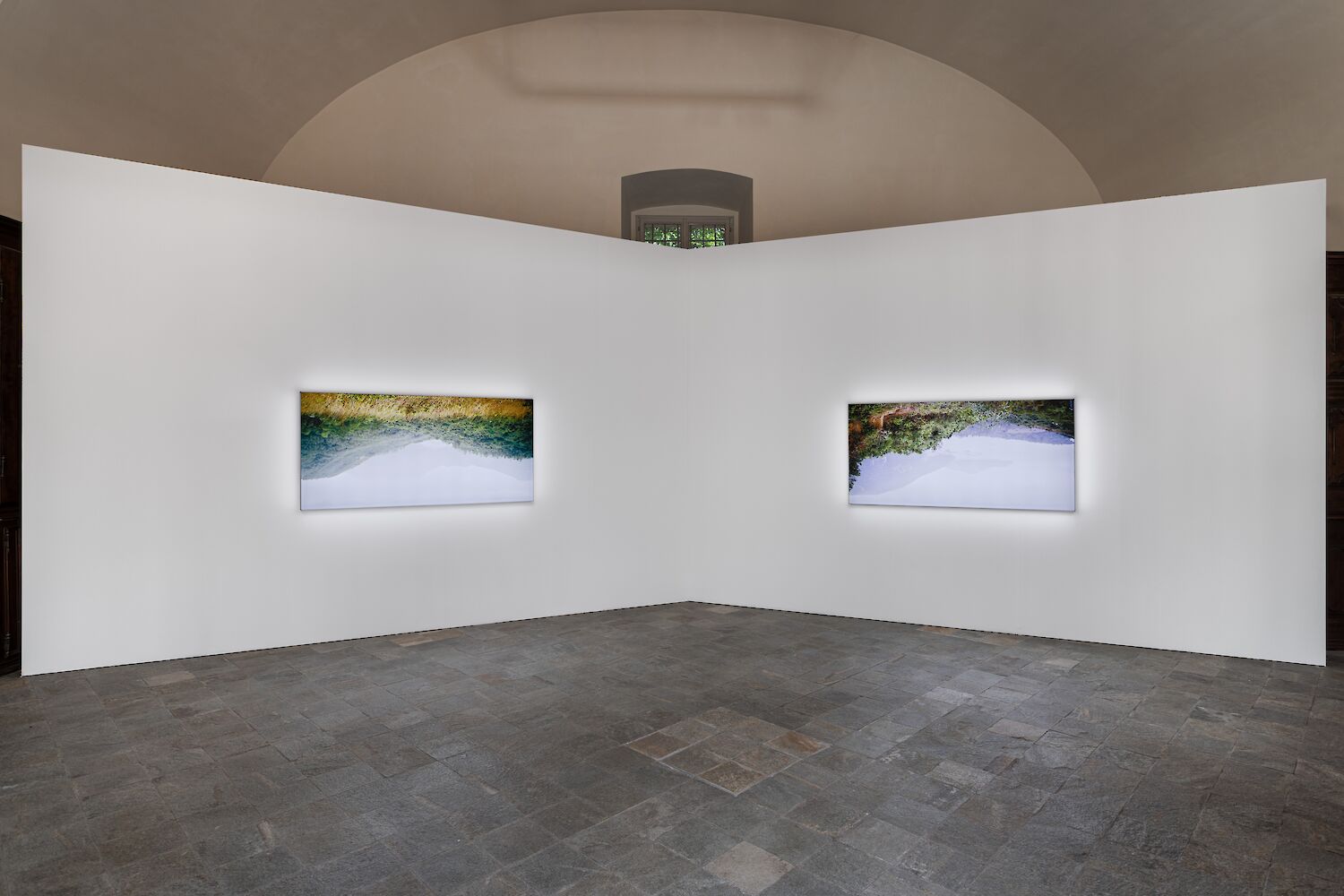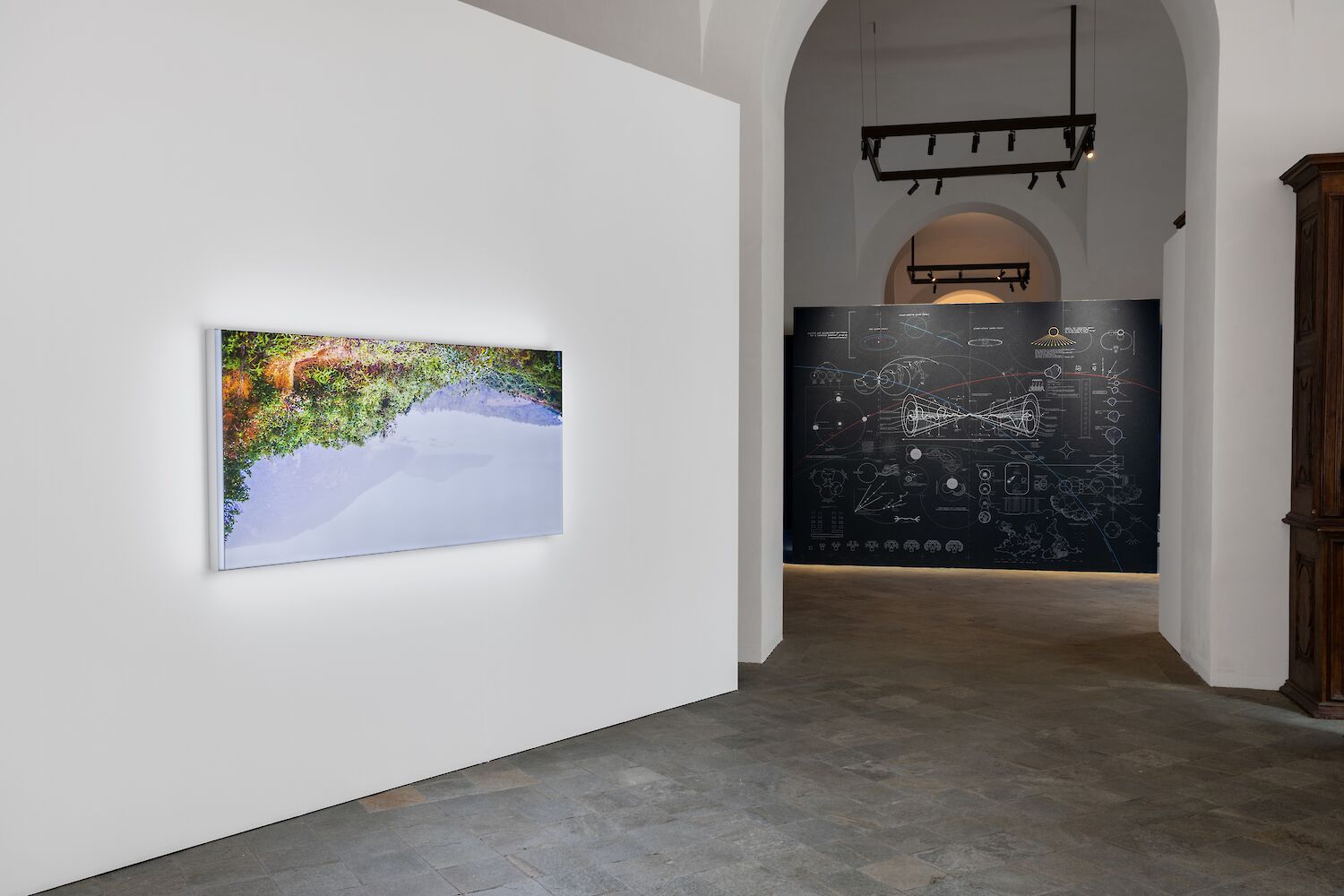
To Be In And Out Of The World, EXPOSED, Torino Foto Festival, April 16 - June 2 2025.
Curated by Zoé Samudzi with works by Tiffany Sia, Ahlam Shibli, Nolan Oswald Dennis.
Installation views from To Be In And Out Of The World, on view at Archivio di Stato di Torino as part of EXPOSED Torino Foto Festival 2025.




To Be In and Out of the World considers the contradictory simultaneity of exilic-diasporic and indigenous spatiality and temporality. Rejecting the binarizations of home and away, the insistences that these relations to space and place be oppositional, the exhibition illustrates a visual politic of “post”-colonial dispossession through triangulated geographies of Hong Kong/China, Palestine/Israel, and non-white/white South Africa through the works of Tiffany Sia, Ahlam Shibli, and Nolan Oswald Dennis, respectively. Imagined as a rebuttal against the mythologies of empire and state, To Be In and Out of the World considers national-bureaucratic, affective, and social-cultural transformations resulting from movement-displacement. As thematic connective tissue, Dennis’s conceptual muralism, grounded in their notion of the “black consciousness of space,” presents dynamic diagrammatic bodies of language whose generality and place-specificity provides contours for the cartographies of decolonial imaginary and possibility.
The accidental narrative throughline of Shibli’s “Staring” (2024) illustrates synchronicities of worldmaking and world collapse across space and time. Germany’s sustained destruction during World War II necessitated an import of Gastarbeiter (guest workers) at the same time scores of Eastern Europe’s Nazi genocide-affected Jewish communities were migrating to the established “national home” in Palestine whose borders were partitioned by the United Nations in 1947 and named Israel at independence the following year. Circuits of worldlessness are often realized as dramatic demographic shifts and exchanges. Muslim Turks arrived in Germany as a direly needed labour force and would later be subjected to xenophobic scapegoating; the contemporary protection of Jewish people vis-à-vis a sacralised memory of the Shoah (the protection of which is Germany’s articulated state reason for existence) saw Palestinians as acceptable sacrifices for Israeli expansionism; Arabs/Muslims have been cast as responsible for importing this century’s antisemitism, a race hate allegedly purged by postwar denazification, thus justifying mass expulsion from Germany.
Germany’s remaking is partially constituted through Palestine’s genocidal immiseration and remaking by Israeli settler coloniality: a constancy of forced Palestinian movement, land loss, mass death, and an indigenous people’s resilient insistence on life-making on and sustenance of their land. Sumud (صمود( is the Palestinian cultural value and political strategy of “steadfast perseverance” that followed the 1967 War’s annexations that created the Gaza Strip and West Bank: on one hand a critical maintenance of life on Palestinian land, and on the other, the dynamic resistance and undermining of Israeli occupation. Palestinian modalities of rootedness, local and international.
Shibli’s juxtaposition of refugees and guest workers in Kassel with the carceral apparatus in the West Bank dramatically illustrates this in/out contrasting between the bureaucratically legible and socially dead: between peoples whose collectivities are conditionally permitted and those whose lands and livelihoods are subject to constant disappearance. But this juxtaposition is hardly binaristic as in/out defines the unsteady grounds of minoritarian existence. The homes and geographies bulldozed and reconstituted—materially and metaphysically—emerge from loggerhead contestations and shifting boundaries of rejection/belonging, loss/memorialization, dislocation/reclamation, and the perpetually circulating violences therein.
In her description of how carceral image-making produces a “vision of the subject in disintegration under the pressure of state omniscience,”[1] Sia presents a movement at once cast out and elusive in its flight. A diasporic and exilic movement similarly compelled by alienating and aspirational geopolitical forces, and a movement that defies classic diasporic representational rationales of legibility and strivances towards recognition. These ambivalences are visible in characterizations of the Hong Kong protests: the conflation of insistences upon local democratic governance and rejection of further mainland Chinese securitization with illiberal anti-communism. Below the intrusion of the state is a visual logic beyond visibility: rather than seeing a landscape that allows the placement—and possibly dangerous revelation—of one’s location, the escape from Shanghai in “A Child Already Knows” (2024) is evidenced only by the soporific repetition of the train motoring across the countryside. The risk of exilic journeying, concealed by the small lie of a family holiday, precludes reenactment and documentation; covert traversal through Maoist China can only be configured through the child’s recollection of this holiday and the cartoons scaffolding any child’s memory.
Here, in/out is formulated within and against the tenuousness of one’s narrative reliability and the obliterating omnipotence of state historicity: against one’s affixation in the [post-]Cold War order and one’s obedience as a pliable political subject. A clandestine seeing against a state that can easily expel as traitor, dissident, threat to the revolution. Through this conception of movement that “exceeds the coherent,”[2] where every point in this unending elliptical journey operates as a proxy for some other real or imagined elsewhere, the train delivers us to “no place,” a geopoetics that refuses the possibility of completion, state capture, and even arrival. “No place” is to be of and dissociated from the world, a fugue state perhaps most usefully materialized through the gaze of a child—neither innocent nor sentimental, but a registration of the world that usefully recapitulates the hazy “myth of place through the phantasmagoria of memory.”[3]
[1] Tiffany Sia, On and Off-Screen Imaginaries. Brooklyn, NY: Primary Information, 2024, p. 48.
[2] Ibid, p. 130.
[3] Ibid, p. 149.